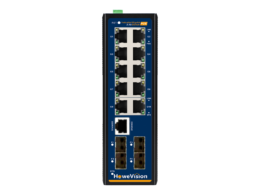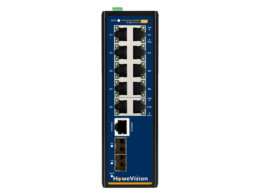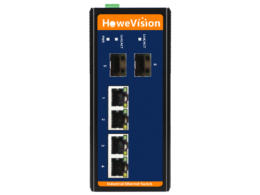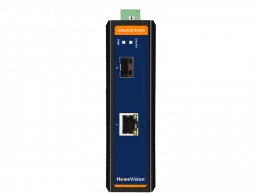When you set up an internet connection, it isn’t enjoyable to see so many wires here and there. You need to have separate cables for transferring different things, like power and data.
There is no way around it; loose wires look bad. Reducing wire and cable clutter will result in a cleaner, more organized look and make it easier for you to set up complex systems.
As we try to make the technology even more compact, reducing wires has become an important thing.
All of these became the reason for introducing the concept of Power over Ethernet (PoE). To build up a proper network connection, you should have a clear idea about PoE and non-PoE devices. Having some knowledge about their differences, advantages, and disadvantages will help you immensely.
PoE stands for Power over Ethernet. It is a technology through which network cables carry electrical power. Usually, any device requires a network connection and power connection to function after installation. But if the device is PoE-compatible, there is no need for a separate electrical contact as the single cable can provide electrical power and data connection.
The primary objective is to reduce the total number of wires in a setup. This feature is essential in VoIP phones, network cameras, and wireless access points.
Maintaining the IEEE 802.3af standard, each port in a PoE switch provides 48V and up to 15.4W per port and is compatible with older generation pre-802.11 ac access points.
Their ability to transfer both power and network using a single wire makes them very useful for troubleshooting. You can turn off a connected device remotely by merely turning off the ethernet port – this makes rebooting for repairing and troubleshooting much more accessible.
Difference Between PoE And Non-PoE Switch
A PoE switch has a built-in PoE Technology. Once connected with a PoE-compatible network device, the switch enables electrical power automatically.
It is generally used in devices like IP phones, wireless access network (WAN) ports, and IP cameras.
A PoE switch is compatible with both PoE and non-PoE devices. Whenever you connect a non-PoE device, the PoE feature gets turned off, and the port transfers data.
It is generally used to provide wireless access points throughout large buildings, such as offices or hospitals. Since one can significantly reduce the total number of wirings, all connections can be made quickly, bypassing the wires through walls or ceiling.
A non-PoE is a primary switch used only to send data to network devices over the Ethernet.
It is generally used in devices where external power is needed, like a personal computer (PC).
A non-PoE switch cannot transfer power to any connected devices. you don`t get the ability to turn on or off the system remotely by merely switching off the ethernet port.
If you are setting up a small, simple home connection where the number of wires does not matter, you can go for a non-PoE relationship.
PoE switch
We have mentioned the term “PoE switch” quite a few times. Before we move on, let us understand what a PoE switch is.
In general, a switch connects multiple devices in a network. It uses the packet-switching method to receive and deliver data to a specific destination. The destination is determined using the MAC addresses of the connected devices.
A PoE switch has PoE built into it. Using just a single power source to connect the switch, the switch itself can act as a power supply for the other devices.
PoE Switches range from low-cost edge switches with few unmanaged ports to complex multi-port rack-mounted units with highly sophisticated management.
Even though, in general, we use PoE switches for low-powered power devices, multiple power ratings depending on which device you are connecting.
We use 15.4W output for low-powered devices like biometric control, and security cameras. It is also used for WLAN connections.
30.8W is used for RFID readers, Voice over Internet Protocol (VoIP) phones, and alarm systems.
60W switches are used for high-powered power devices like laptops, information kiosks, and point-of-sales systems.
90W switches are used for heavy power-consuming devices and jobs like video conferencing, televisions, large computer systems, and wireless systems that consume much power.
Advantages
● Easy to install: In PoE switches, a single wire transmits both data and power. There is no need for any qualified electrician to set up a network using PoE switches. The massive reduction in the total number of wires will allow you to create a network without looking messy.
You can quickly move a PoE system from one place to another at the switch level. PoE acts on a plug-and-play mechanism, so you do not have to reprogram an entire network to add or remove any device.
● Saves money and time: There is no additional requirement for electrical wires or outlets. So, the time and money required for installation and maintenance are reduced.
● Safe: PoE devices are mainly used to power devices that do not consume much power. The total amount of current flowing through the circuit is lesser, and there is no involvement of high power lines, so there is no risk of short courses.
Even if any accident happens, you can disconnect the power using the switch quickly and safely.
● Flexibility: PoE switch eliminates the need for power outlets. So, one can use them to create wireless access points wherever they are needed. You can even move a system from one place to another quickly.
Limitations
● Distance limitations: PoE switch generally transmits power up to a distance of 100 meters. However, one can use powered fiber cables to extend the range of PoE switches.
● Compatibility Issues: Not all devices come with PoE support. However, you can upgrade to a PoE Switch with an injector.
● Restricted Power Rates: The power rates are dependent on its IEEE 802.3 generation, and you need to install PoE systems of different power ratings for various devices.
Active and Passive PoE Switch
An active switch is the standard PoE switch that automatically detects the devices as non-compatible and interacts with them as a standard switch without supplying electrical power.
A passive POE switch starts sending electrical signals over the ethernet cable without checking the devices’ compatibility. They may lead to burning out of non-PoE devices like computers and laptops.
How to upgrade a Non-PoE switch to a PoE switch?
Sometimes it may happen that you do not have a switch with PoE capabilities. But to upgrade to a newer generation of networking, you don’t need to replace your entire switch. There are some devices available that can easily convert non-PoE devices into PoE devices.
One of them is called a PoE injector. It is a device that adds electrical power and transmits both data and power in a single wire. You can turn off the injector if you want to use the switch to send only data.
Another device is a PoE splitter. It has two input points and one output point. It takes data and power from two of its input ports and releases the output from a single port. Its mechanism is more straightforward and is a much smaller device that you can use to convert more minor network connections.
Now that we have made you aware of PoE’s significance, and how it is different from the older generation networking system and power rating budgets, we hope you will choose the right technology for your network connection.










